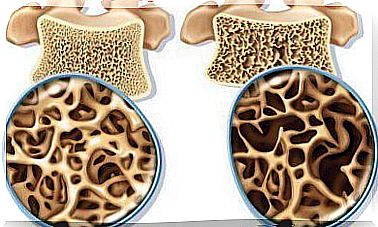Opioids In The Treatment Of Cancer Pain

Opioids are common drugs for treating pain caused by cancer. Often, severe and debilitating pain is caused by the pressure caused by the tumor itself, but it can also be caused by, among other things, cancer treatment or changes in the immune system.
Today, cancer is one of the most significant health problems. Millions of people die of cancer every year. In addition, about 40% of patients undergoing cancer treatment have severe pain.
In the final stage of cancer, such pain occurs in up to about 80 percent of patients. It is a complex situation that is difficult to deal with. Each person responds in their own way to different treatments, which often contain very potent medications.
Currently, researchers have made progress in this particular field and have gradually begun to set new treatment recommendations. So in today’s article, we’ll discuss the use of opioids in the treatment of cancer in more detail .
How to relieve a patient’s pain
As mentioned earlier, cancer treatment must be individualized, as each patient is different. Therefore, physicians need to guide patients in this matter, as the symptoms and their proper treatment depend on the type of cancer, the cause, and even the patient’s own way of experiencing pain.
However, there are certain basic guidelines for treating pain caused by cancer based on the intensity of the pain. These definitions are based on the standards of the World Health Organization. The following medications are used to help treat cancer from mild pain to worse pain:
- Simple painkillers such as acetaminophen and non-steroidal anti-inflammatory drugs (NSAIDs) are for people with mild pain. The most common such painkillers are ibuprofen and naproxen.
- In the second stage of treatment, weak opioids are used for patients with moderate pain. This group uses codeine, tramadol or dihydrocodeine for pain relief.
- Doctors prescribe potent opioids only to treat very severe pain. Morphine is the most commonly used of these, but methadone or fentanyl can also be used for treatment. Unfortunately, more than half of cancer patients eventually need these stage III drugs.

To classify pain, physicians must evaluate their patients appropriately and personally, and for this purpose they use separately defined pain scales. Pain scales define different features of pain to classify it as something between mild and intolerable pain.
Usually, however, the pain is caused by several factors, in which case it may also be necessary to use several different medications to alleviate it.
What exactly are opioid drugs?
Opioid drugs are drugs derived from opium that also affect brain receptors or so-called opioid drugs. opioid receptors. They are distributed through the central and peripheral nervous systems.
These drugs bind to receptors and suppress nerve stimuli. Thus, by slowing stimuli, medications reverse the spread of the feeling of pain.
However, you need to keep in mind that these medications have numerous side effects. First, it is important to keep in mind that a large proportion of opioids, such as morphine, are addictive and its use can lead to drug dependence.
These medications can also increase fatigue as well as weakness. One risk is that they can lead to depression or affect respiratory function.
Physicians should therefore be very careful about dosage and people should always use opioid medications only under medical supervision.

Opioids in the treatment of cancer
Secondary drugs for cancer pain: weak opioids
As mentioned above, the most common drugs used at this stage are tramadol and codeine. They can be taken by the patient in different ways: either by delaying the release of the drugs they contain or by promoting an immediate, direct effect. Patients can also use them safely with other medications, such as non-steroidal anti-inflammatory drugs (NSAIDs).
For example, codeine is intended for oral administration. However, patients with liver or kidney problems should avoid using it.
Tertiary drugs for cancer pain: strong opioids
These medicines are especially designed to treat cases where the pain caused by the cancer is already intolerable. Morphine is the most commonly used because of its very versatile use.
Morphine also does not have an actual “painkiller ceiling”. Therefore, physicians are free to change the dosage of morphine according to the patient’s symptoms. However, the dose limit is determined by the side effects of morphine, as an overdose of morphine can be fatal.
Opioids in the treatment of cancer: a conclusion
The use of opioids in the treatment of cancer is a complex process, and very case-specific. Therefore, physicians should prescribe appropriate treatment according to the characteristics of each patient. As you can see, it is always up to a professional in the field, i.e. a cancer doctor, to initiate such treatment and make decisions about the instructions associated with it.









